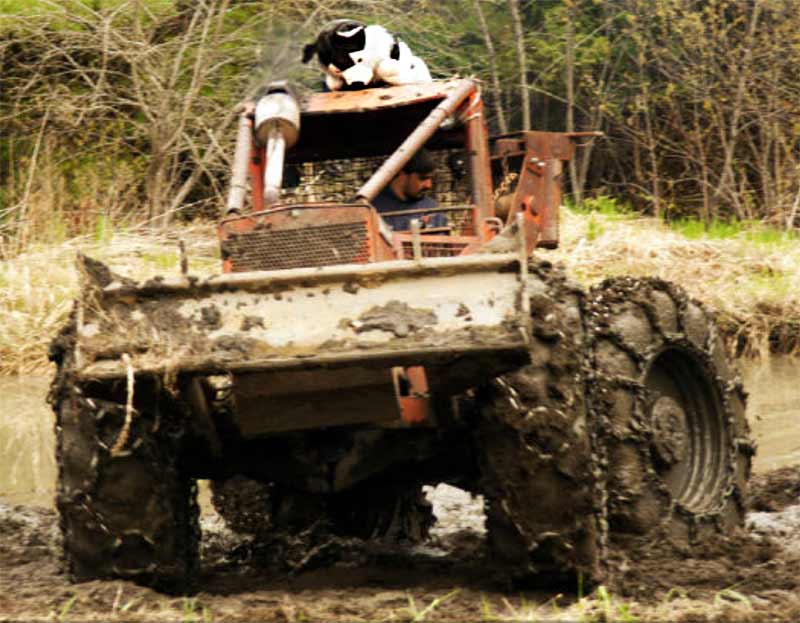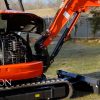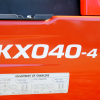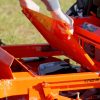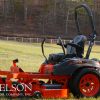No matter how careful you are and how precisely you follow proper procedures while operating, chances are good that your tractor will eventually get stuck in the mud. This could be with or without an implement attached. Don’t worry, there are a few precautions you can take to avoid personal injury and damage to your equipment when extracting stuck equipment.No matter how careful you are and how precisely you follow proper procedures while operating, chances are good that your tractor will eventually get stuck in the mud. This could be with or without an implement attached. Don’t worry, there are a few precautions you can take to avoid personal injury and damage to your equipment when extracting stuck equipment.
Step One: Lock, Raise, and Back Out
As soon as the tires of the tractor begin to spin and before you are significantly stuck, raise the attached implement and engage the differential lock (if your tractor has one). If the boggy area is small, you may be able to carefully continue through with the implement raised without serious danger or risk of getting your tractor stuck.
If you don’t think you can continue through, or feel it is unsafe to do so, stop the tractor, engage the differential lock, and raise the implement from the ground. Then, put the tractor into reverse, slowly and carefully engage the clutch, and try to back out with the throttle about one-fourth open. If that does not work, stop. Spinning the wheels could dig your tractor in even deeper.
Step Two: Dig or Detach
The next step is to try and dig the mud away from the front and rear wheels, deep enough until you can get the tractor to move in reverse and build up momentum to back out of the mud. If this doesn’t work, you will need another tractor to pull yours out.
When another tractor is pulling yours out, you need to move any attachments out of the way before dealing with the tractor. Detach the implement from the stuck tractor and disconnect the hydraulic lines. Attach a chain from the reinforcement tractor to the implement frame and pull the attachment slowly out of the mud.
Move slowly and cautiously when pulling an attachment this way, because you will have very limited power over the direction it will travel. Once it is free from the mud and on solid ground, properly attach it to the second tractor (the one not stuck), and drive it somewhere out of the way.
Step Three: Hitch and Pull
After the implement is clear of your path, you can begin to free the tractor. You should always try to pull the tractor backwards, because it will have less resistance when being dragged through the same ruts it created. The support tractor doing the pulling should always be kept on solid ground. Be sure to use a tow bar or chain strong enough to handle the size of the load. Before you begin to tow, make sure the entire area is free of animals, people, and large debris.
Attach the two machines drawbar to drawbar. Improper hitching can cause a tractor to tip over backwards while pulling. Making sure the chain is properly attached between drawbars will help prevent accidents and damage to your equipment. After the tension on the towing device is tight and the support tractor has begun to pull, put the stuck tractor in reverse to help build the momentum needed to free the tractor.
Step Four: Examine and Clean Up
Once the tractor is free from the mud, thoroughly examine it to confirm it is still in acceptable operating condition. Mud will most likely be caked on in many places and crevices of the tractor, and will need to be cleaned. In the field, you can use a brush or tool handle to loosen and discharge clumps. Give the tractor a thorough cleaning as soon as possible.
Always remember to check with your owner’s operating manual before handling and working any piece of equipment and abide by all safety and operating instructions to help avoid getting your tractor stuck or any other accidents or mishaps.


